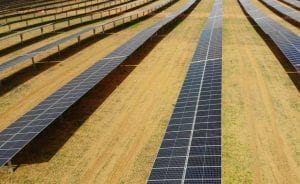The newly elected India government of Narendra Modi has announced a suite of initiatives for solar energy across the country that will be partly funded by a doubling of the tax on coal.
Modi – a long time supporter of solar – has promised a “saffron” revolution that will include ambitious targets for small, large and off-grid solar and a switch away from an assumed reliance on coal as the country seeks to deliver on its momentous task of bringing electricity to the entire country.
 In its first budget announced this week, Modi’s government announced funding for a series of “ultra mega” solar PV farms to be located in four Indian deserts, in Rajasthan, Gujarat, Himachal Pradesh and Jammu & Kashmir.
In its first budget announced this week, Modi’s government announced funding for a series of “ultra mega” solar PV farms to be located in four Indian deserts, in Rajasthan, Gujarat, Himachal Pradesh and Jammu & Kashmir.
The government also launched a scheme for 100,000 solar power driven agricultural pump sets and water pumping stations in off grid areas.
It has also announced plans to dramatically extend a plan to cover canals with a series of 1MW solar farms, using availabl space to generate electricity and to reduce evaporation.
And it has also announced tax cuts and excise exemptions for arrange of solar components and machinery to help reduce the cost of domestic manufacturing of solar PV cells and modules.
This is considered crucial if the government is going to meet the ambitious 20,000MW of solar by 2022 under the previous government’s National Solar Mission program.
But Modi wants to expand this dramatically – some suggest 10-fold, but perhaps not in the same time frame – and has promised at least a solar light in every household by 2020 as part of his “saffron revolution”. India currently has some 300 million people – nearly the population of the US – without power.
Deutsche Bank says the country currently has 2.6GW of solar capacity – much of it in Modi’s home state of Gujarat – and it expects installations to be around 1.5GW in 2014 and around 2GW in 2015.
 However, Bloomberg New Energy Finance said in a report last week that India could install more than 200GW of solar out to 2030 – nearly as much as coal-fired generation – because utility scale solar will be cheaper than new coal plants in India by 2020. The country is also expected to reach “socket parity” for residential solar before 2020.
However, Bloomberg New Energy Finance said in a report last week that India could install more than 200GW of solar out to 2030 – nearly as much as coal-fired generation – because utility scale solar will be cheaper than new coal plants in India by 2020. The country is also expected to reach “socket parity” for residential solar before 2020.
Meanwhile, the $250 million budgeted for these measures in the 2014/15 financial year will be financed by a doubling in the tax on coal to 100 rupess ($1.70) a tonne. The tax, introduced in the 2010 budget, collected about 25 billion rupees in its first year.








